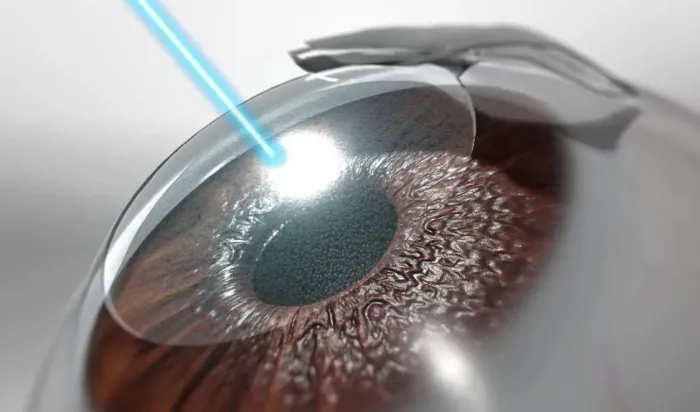Ultra LASIK eye surgery is an advanced vision correction procedure. It uses cutting-edge laser technology to reshape the cornea. This improves how light enters the eye, giving clearer vision.
Many people choose Ultra LASIK over traditional LASIK. It offers faster recovery and greater precision. But how does it work? Who is a good candidate? Let’s explore everything you need to know.
How Does Ultra LASIK Work?
Ultra LASIK is a type of refractive surgery. It corrects common vision problems like:
- Nearsightedness (myopia)
- Farsightedness (hyperopia)
- Astigmatism
The procedure uses a femtosecond laser to create a thin corneal flap. Then, an excimer laser reshapes the cornea underneath. This improves how light focuses on the retina.
Key Steps in Ultra LASIK Surgery
Consultation – The doctor checks your eye health and vision.
Mapping the Cornea – A detailed scan creates a 3D map of your eye.
Laser Flap Creation – The femtosecond laser makes a precise flap.
Cornea Reshaping – The excimer laser adjusts the corneal shape.
Flap Repositioning – The flap is placed back to heal naturally.
The entire process takes about 15 minutes per eye.
Who Is a Good Candidate for Ultra LASIK?
Not everyone qualifies for Ultra LASIK. Ideal candidates usually:
- Are at least 18 years old
- Have stable vision for at least a year
- Have healthy corneas with sufficient thickness
- Do not have severe dry eye syndrome
- Are free from eye diseases like glaucoma
Your eye doctor will perform tests to confirm eligibility.
Benefits of Ultra LASIK Over Traditional LASIK
Ultra LASIK offers several advantages:
Higher Precision – Customized treatment based on corneal mapping.
Faster Recovery – Many patients see clearly within 24 hours.
Reduced Risk of Complications – Advanced lasers minimize errors.
Better Night Vision – Less glare and halos compared to standard LASIK.
Potential Risks and Side Effects
Like any surgery, Ultra LASIK has risks. Possible side effects include:
- Dry eyes (usually temporary)
- Mild discomfort or light sensitivity
- Temporary blurred vision
- Rare complications like infection or undercorrection
Most side effects improve within weeks. Serious issues are uncommon.
Recovery and Aftercare
Recovery from Ultra LASIK is quick. Follow these tips for best results:
- Avoid rubbing your eyes for a week.
- Use prescribed eye drops to prevent infection.
- Wear sunglasses to protect against bright light.
- Skip swimming and contact sports for a few weeks.
Most people return to work in 1-2 days. Full healing takes a few months.
How Long Do Results Last?
Ultra LASIK provides long-lasting vision correction. Many people enjoy clear vision for decades. However, natural aging (like presbyopia) may still affect eyesight later.
Is Ultra LASIK Worth the Cost?
Ultra LASIK is more expensive than traditional LASIK. Prices range from 4,000 per eye. Many patients find the benefits justify the cost. Financing options are often available.
Conclusion
Ultra LASIK is a safe, effective way to reduce dependence on glasses or contacts. With advanced technology and quick recovery, it’s a popular choice for vision correction.
If you’re considering Ultra LASIK, consult an experienced eye surgeon. They can assess your eyes and recommend the best treatment.
Frequently Asked Questions
Is Ultra LASIK Painful?
Most patients feel little to no pain. Numbing drops keep the eyes comfortable.
Can Both Eyes Be Treated the Same Day?
Yes, most surgeons operate on both eyes in one session.
What If I Move During the Procedure?
The laser tracks eye movements and adjusts automatically.
When Can I Drive After Ultra LASIK?
Most patients can drive within 24-48 hours after approval from their doctor.
Related topics:
Retinal Detachment Surgery Cost: What You Need to Know
7 Common Types of Retinal Surgeries
Retina Transplant for Diabetic Retinopathy: A Complete Guide


